Intel Xeon Silver 4214 Benchmarks
For this exercise, we are using our legacy Linux-Bench scripts which help us see cross-platform “least common denominator” results we have been using for years as well as several results from our updated Linux-Bench2 scripts. Starting with our 2nd Generation Intel Xeon Scalable benchmarks, we are adding a number of our workload testing features to the mix as the next evolution of our platform.
At this point, our benchmarking sessions take days to run and we are generating well over a thousand data points. We are also running workloads for software companies that want to see how their software works on the latest hardware. As a result, this is a small sample of the data we are collecting and can share publicly. Our position is always that we are happy to provide some free data but we also have services to let companies run their own workloads in our lab, such as with our DemoEval service. What we do provide is an extremely controlled environment where we know every step is exactly the same and each run is done in a real-world data center, not a test bench.
We are going to show off a few results, and highlight a number of interesting data points in this article.
Python Linux 4.4.2 Kernel Compile Benchmark
This is one of the most requested benchmarks for STH over the past few years. The task was simple, we have a standard configuration file, the Linux 4.4.2 kernel from kernel.org, and make the standard auto-generated configuration utilizing every thread in the system. We are expressing results in terms of compiles per hour to make the results easier to read:
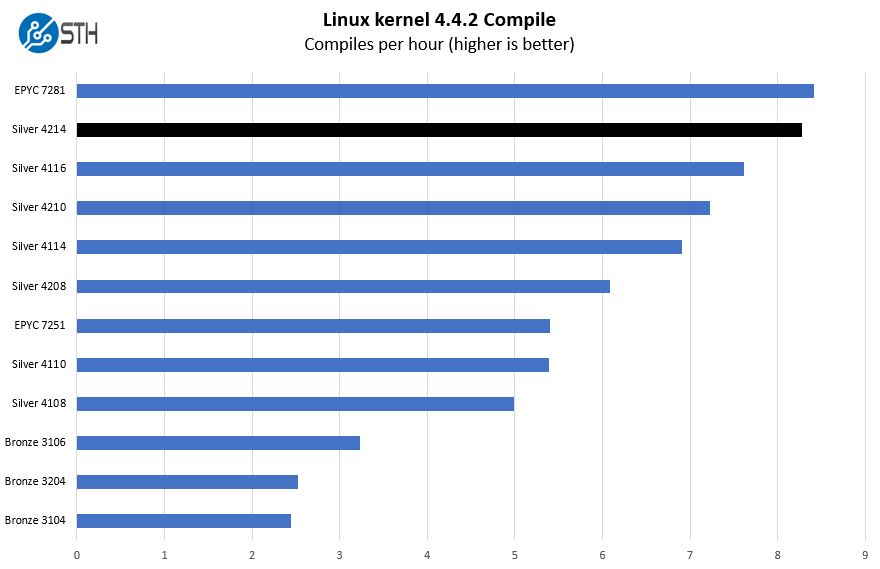
Here we wanted to point out that this is a 12 core Intel Xeon part trading blows with the AMD EPYC 7281. We should point out that the list price on the EPYC 7281 is still slightly lower ($650 v. $694.) List prices are not exactly being adhered to on the AMD side as we are publishing this review in late Q2 2019, but it is a comparison point. It is also a 2019 Intel Xeon “Cascade Lake” part versus a 2017 AMD EPYC “Naples” CPU. Still, Intel maintains that it can use fewer cores and achieve the same performance, and this is an example where the performance delta is in the low single digits even with the EPYC having 33% more cores.
c-ray 1.1 Performance
We have been using c-ray for our performance testing for years now. It is a ray tracing benchmark that is extremely popular to show differences in processors under multi-threaded workloads. We are going to use our 8K results which work well at this end of the performance spectrum.
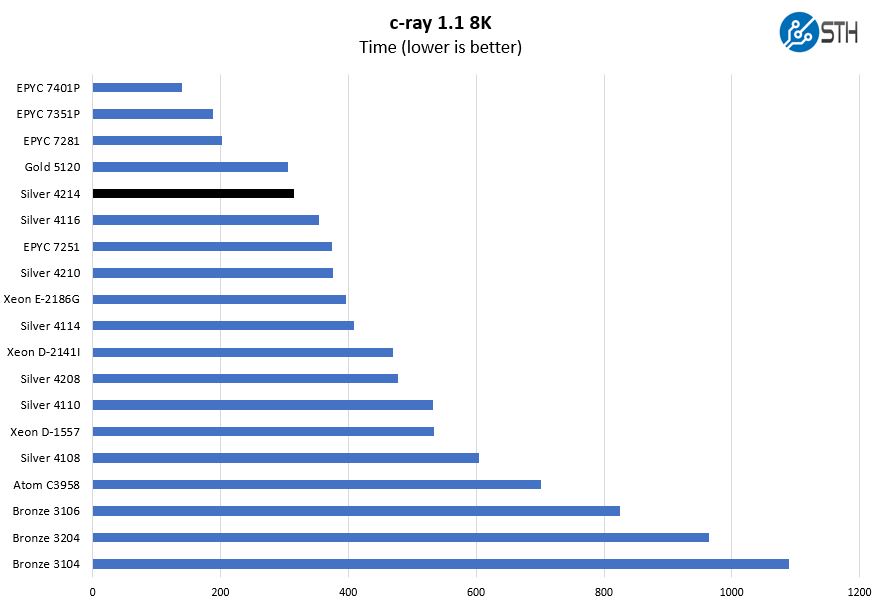
AMD performs well here, but we wanted to focus on the Intel-to-Intel comparison. With 12 cores, the Intel Xeon Silver 4214 performs very well compared to the Intel Xeon Silver 4114.
7-zip Compression Performance
7-zip is a widely used compression/ decompression program that works cross-platform. We started using the program during our early days with Windows testing. It is now part of Linux-Bench.
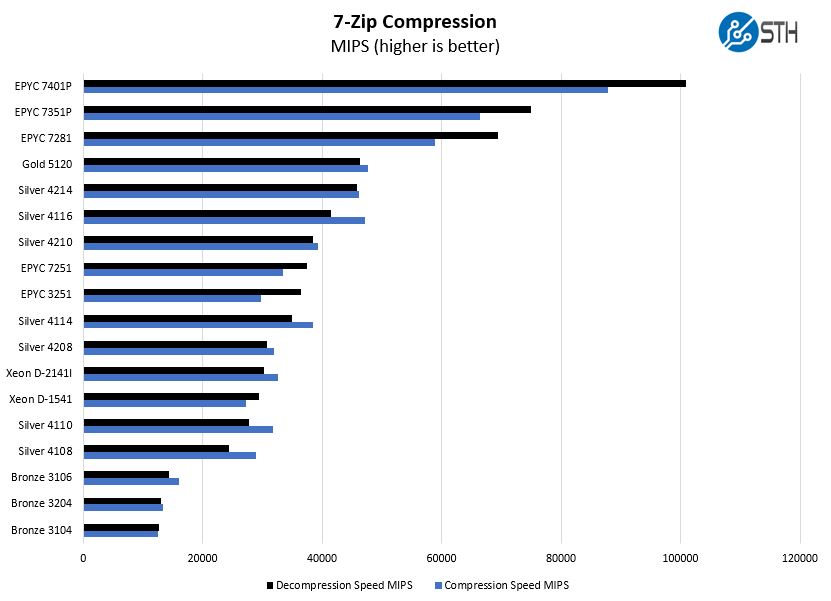
Here we wanted to point to an emerging pattern. The Intel Xeon Silver 4214 with its high single thread speeds and 12 cores actually performs between the Intel Xeon Silver 4116 and Intel Xeon Gold 5120. That essentially means that the price/ performance ratio has gone up by well over 30% in this generation.
NAMD Performance
NAMD is a molecular modeling benchmark developed by the Theoretical and Computational Biophysics Group in the Beckman Institute for Advanced Science and Technology at the University of Illinois at Urbana-Champaign. More information on the benchmark can be found here. With GROMACS we have been working hard to support Intel’s Skylake AVX-512 and AVX2 supporting AMD Zen architecture. Here are the comparison results for the legacy data set:
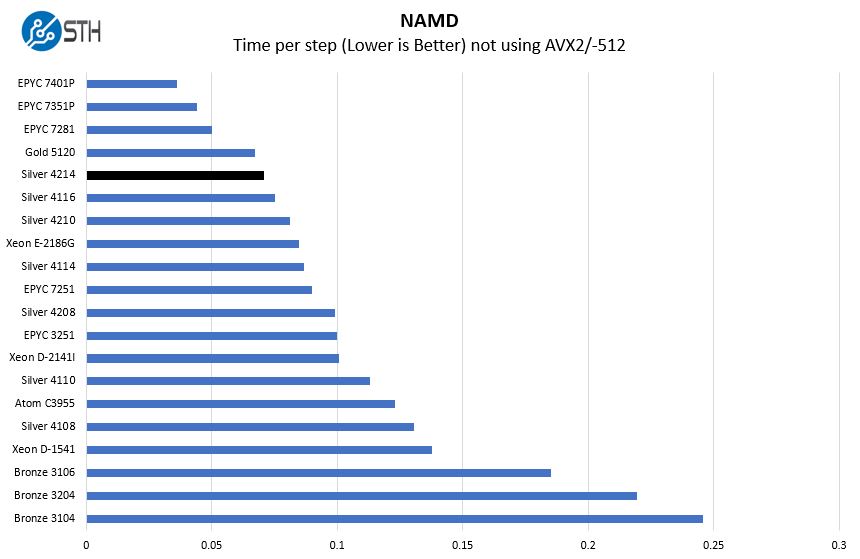
Again, we see very strong performance, even above the Intel Xeon E-2186G. This is what we would expect since the E-2186G has half as many cores. Still, the Xeon E has higher clock speeds. Sometimes simply having more cores can help and that is what is propelling the Intel Xeon Silver 4214.
Sysbench CPU test
Sysbench is another one of those widely used Linux benchmarks. We specifically are using the CPU test, not the OLTP test that we use for some storage testing.
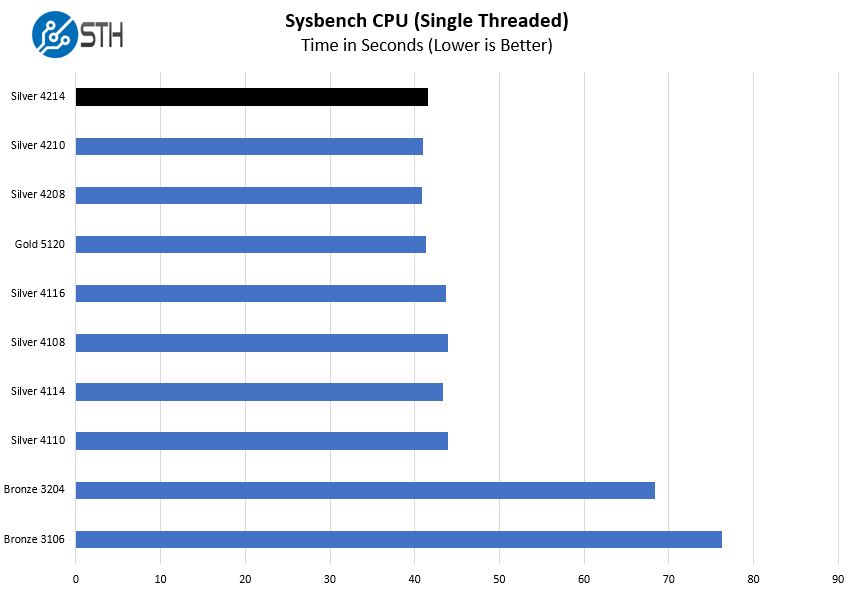
We wanted to point to the single thread clock speed of 3.2GHz. This is a 200MHz improvement over the 3.0GHz limit of the previous Intel Xeon Silver generation, even the Silver 4116. We also see that 3.2GHz is similar to the Intel Xeon Gold 5120.
OpenSSL Performance
OpenSSL is widely used to secure communications between servers. This is an important protocol in many server stacks. We first look at our sign tests:
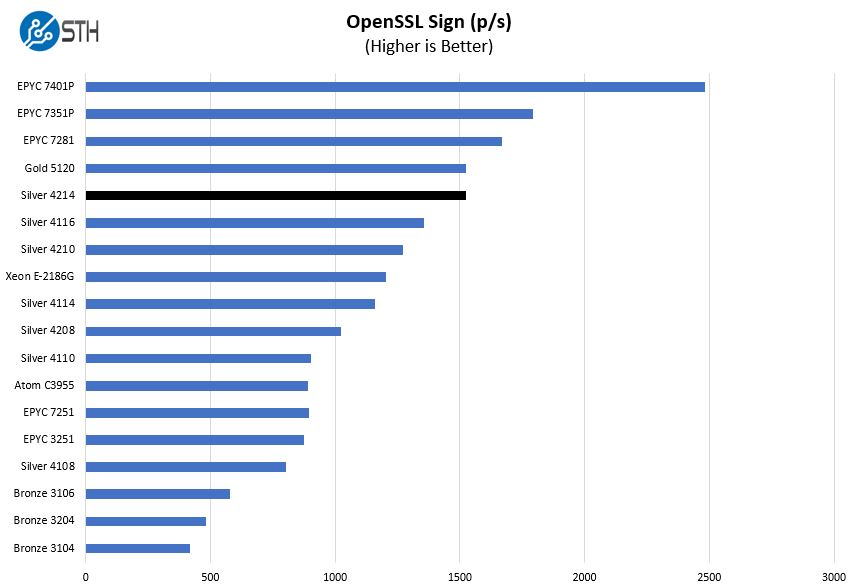
Here are the verify results:
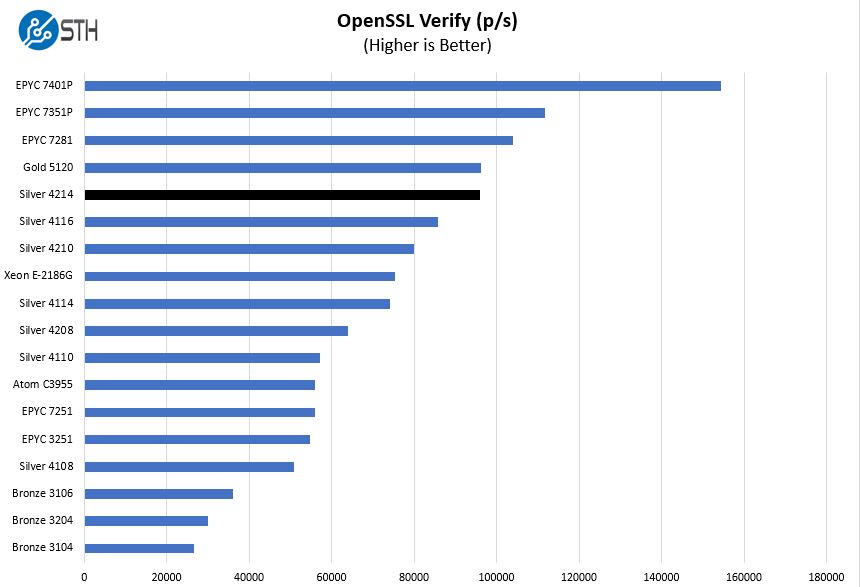
For those looking at a potential upgrade from the Intel Xeon Silver 4210 to the Intel Xeon Silver 4214, these charts should show why we generally think this is wise. Having two additional cores for under $100 per core is generally worth it if you can get 15-20% more performance from your server. It is only when budgets are at their tightest would we recommend the Silver 4210 over the Silver 4214.
UnixBench Dhrystone 2 and Whetstone Benchmarks
Some of the longest-running tests at STH are the venerable UnixBench 5.1.3 Dhrystone 2 and Whetstone results. They are certainly aging, however, we constantly get requests for them, and many angry notes when we leave them out. UnixBench is widely used so we are including it in this data set. Here are the Dhrystone 2 results:
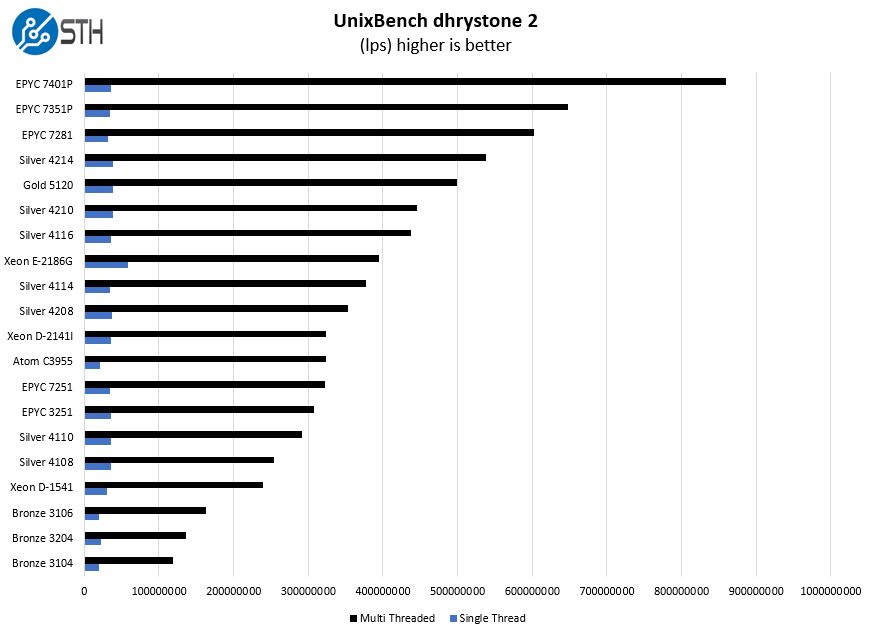
Here are the whetstone results:
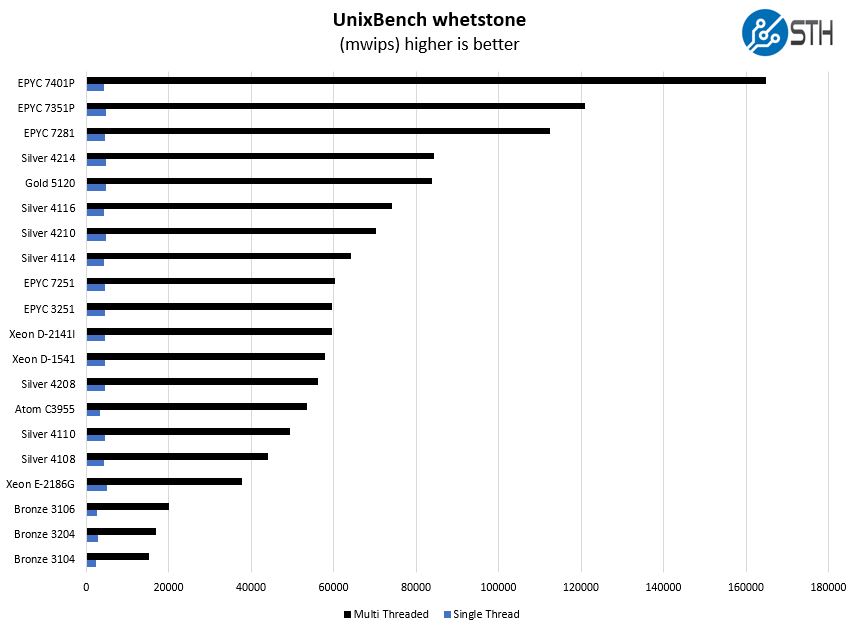
We again see great results here. Intel did a great job generationally improving its parts. AMD is still very strong in these tests.
GROMACS STH Medium AVX2/ AVX-512 Enabled
We have a small GROMACS molecule simulation we previewed in the first AMD EPYC 7601 Linux benchmarks piece. In Linux-Bench2 we are using our “small” case which is appropriate for single-socket servers. Our GROMACS test will use the AVX-512 and AVX2 extensions if available.
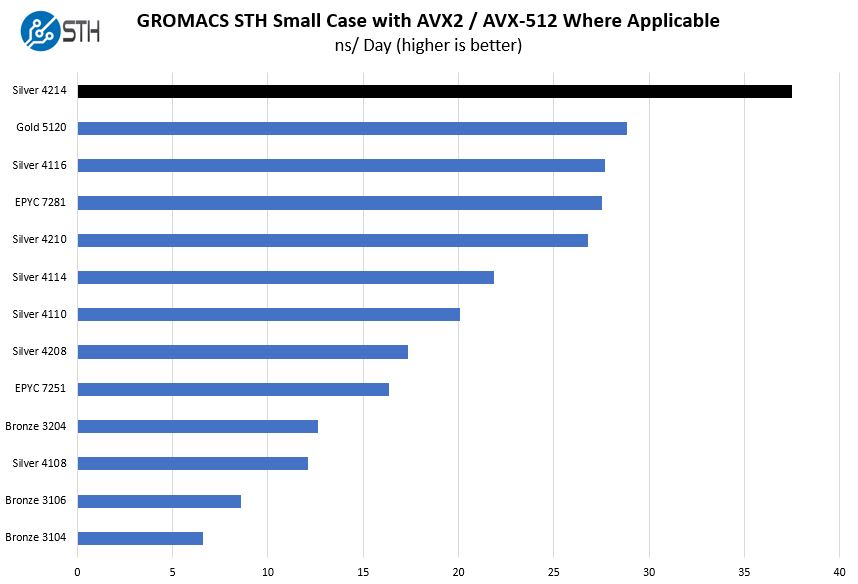
We have pointed this out several times. The Intel Xeon Silver 4200 series performs significantly better than previous generation parts even at the same core count. The same delta between the 12 core Intel Xeon Silver 4214 and Silver 4116 parts is what we likewise see between the 8 core Silver 4208 and 4108. As we noted in our 2nd Gen Intel Xeon Scalable Launch Details and Analysis, we brought this to Intel, and the company maintains that the Cascade Lake Xeon Silver line still has single port FMA AVX-512. Somehow, with the same base and turbo clocks as the Xeon Gold 5120, and even with two fewer cores, the Intel Xeon Silver 4214 is faster.
Chess Benchmarking
Chess is an interesting use case since it has almost unlimited complexity. Over the years, we have received a number of requests to bring back chess benchmarking. We have been profiling systems and now use the results in our mainstream reviews:
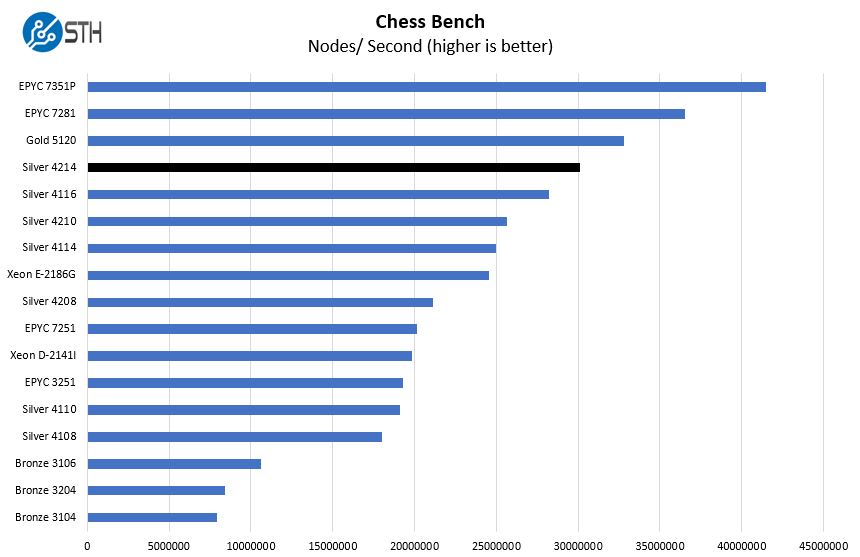
Here we see where the two extra cores of the Intel Xeon Gold 5120 pay off. We can also see the generational improvement the Intel Xeon Silver 4214 yields over the entire previous generation Intel Xeon Silver 4100 line.
Next, we are going to discuss market positioning before our final words.



